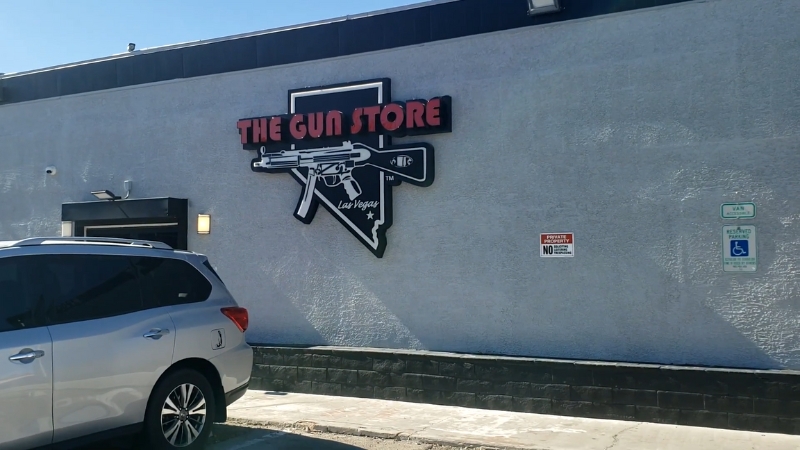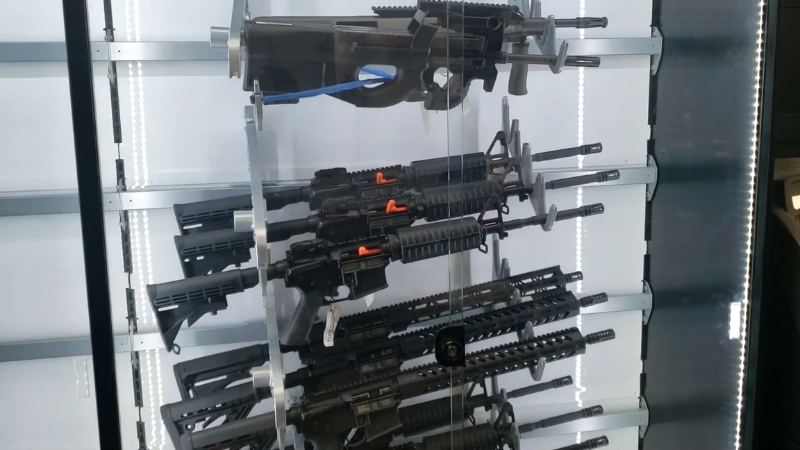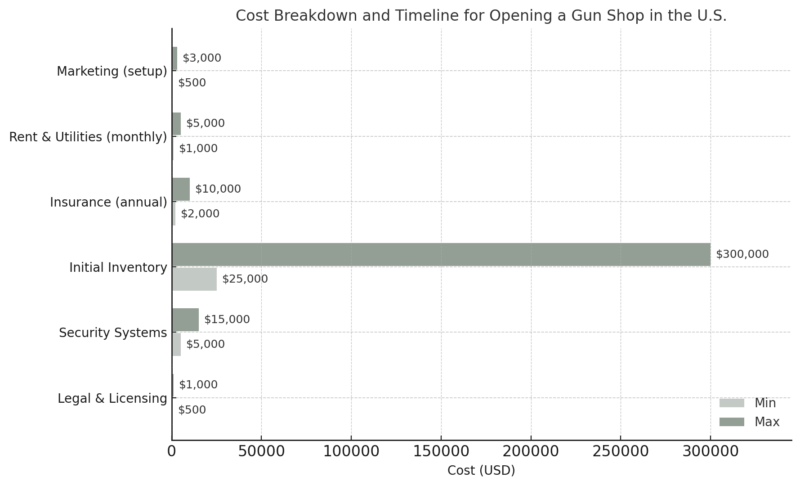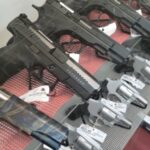Opening a gun shop in the United States is more than just setting up retail shelves and displaying firearms. It is a legally sensitive business that operates under some of the strictest federal, state, and local regulations in the country.
Every sale, every background check, every piece of inventory must be tracked precisely.
Yet, for those willing to meet the requirements, it can be a rewarding business, both financially and personally.
In 2025, small and mid-sized gun stores continue to serve a growing market of sport shooters, hunters, collectors, and self-defense enthusiasts, making the firearms retail industry a viable, legitimate sector to enter.
1. Research the Market and Build a Real Business Plan

Before diving into paperwork, start with research. Identify whether your area can sustain a firearms retailer. Look at existing gun shops, their pricing, specialties, and customer base.
A strong plan goes beyond the idea of selling guns; it defines who your customers are (law enforcement, hunters, collectors, new gun owners), what brands you’ll carry, and how you’ll stand out (training classes, gunsmithing, custom orders, or range access).
A comprehensive plan should also account for the cost of compliance, insurance, security, and licensing fees. Many underestimate how much the legal setup and background systems cost. These can easily add several thousand dollars before the first sale is made.
Planning Stage
Key Tasks
Typical Duration
Notes
Market Research
Identify competitors, analyze pricing, and study local demographics
2–4 weeks
Essential for finding niche opportunities
Financial Planning
Estimate inventory, licensing, rent, insurance, and security costs
3–6 weeks
Create 12-month cash flow projections
Supplier Outreach
Contact firearm wholesalers and manufacturers
1–2 weeks
Some require an FFL before setting up accounts
Expect startup capital needs between $50,000 and $250,000, depending on the scale of your store and inventory depth.
2. Choose a Legal Structure and Secure Zoning Approval
Forming the right business structure is your next step. Most gun stores operate as LLCs or S corporations, offering liability protection and a clear tax identity.
Once registered with your state, you’ll need a Federal Employer Identification Number (EIN) and a state tax ID if required.
The more challenging part is zoning. Firearms retail is not permitted everywhere. Many cities limit gun shops to specific commercial zones or industrial districts.
Before signing a lease, verify with your local planning or zoning department that the property qualifies for firearm sales. If it doesn’t, you may need to request a conditional use permit, a process that can take months and may involve public hearings.
Legal Setup
Requirement
Typical Cost
Authority
LLC Formation
Legal entity registration
$100–$500
State Secretary of State
Zoning Clearance
Verification or permit
Varies by city
Local planning department
Business License
General retail permit
$50–$200
City/County Clerk
Tax ID & Sales Permit
State tax collection authorization
Free–$50
State Revenue Department
Failing to confirm zoning before applying for federal licenses is one of the most common and costly, mistakes new firearm dealers make.
3. Apply for the Federal Firearms License (FFL)
To legally sell guns in the U.S., you must obtain a Federal Firearms License (FFL) from the Bureau of Alcohol, Tobacco, Firearms, and Explosives (ATF). Without this license, you cannot engage in the business of selling firearms, even if your state allows ownership.
The application process uses ATF Form 7, available on the ATF’s website. You’ll submit fingerprints, passport-style photos, and a fee (ranging from $30 to $200 depending on license type).
After submitting, an ATF Industry Operations Investigator will schedule an in-person interview to review your compliance plans, recordkeeping methods, and security layout.
FFL Type
Purpose
Application Fee
Renewal
Type 1
Dealer in firearms other than destructive devices
$200
Every 3 years
Type 2
Pawnbroker dealing in firearms
$200
Every 3 years
Type 7
Manufacturer of firearms (non-destructive devices)
$150
Every 3 years
Type 8
Importer of firearms other than destructive devices
$150
Every 3 years
Processing typically takes 60–120 days, though complex cases or incomplete applications can extend that.
4. Set Up Background Check and Recordkeeping Systems
Once licensed, your most critical task is ensuring compliance with federal background check laws. Every sale to a non-licensee must be accompanied by ATF Form 4473, which records buyer identification and transaction details.
All sales require an instant background check through the National Instant Criminal Background Check System (NICS), unless your state uses an alternate system.
The result will come back as Approved, Denied, or Delayed. If delayed, you must wait up to three business days before proceeding.
Your shop must maintain a bound book, the official log of all acquisitions and dispositions (sales, returns, consignments). The ATF can inspect this record at any time. Retain all Form 4473s for at least 20 years and have an organized filing system.
5. Install Security and Safety Infrastructure
View this post on Instagram
Security is one of the most scrutinized parts of running a gun shop. You are legally responsible for preventing theft and unauthorized access to firearms.
Every location should include:
- A UL-rated safe for overnight firearm storage
- Alarm system connected to a 24-hour monitoring service.
- High-definition surveillance cameras with at least 30 days of recording
- Physical barriers (security doors, reinforced glass, safes bolted to the floor)
- Secure display procedures (no ammunition in display firearms)
Insurance companies will also assess your security measures before underwriting your policy. The more robust your setup, the lower your liability risk and premiums.
Security Feature
Typical Cost
Purpose
Gun Safe (commercial-grade)
$2,000–$8,000
Overnight firearm storage
Alarm & Monitoring System
$50–$150/month
24-hour theft prevention
HD Camera Network
$1,000–$3,000
Surveillance and evidence collection
Security Doors & Bars
$500–$2,000
Physical deterrent
6. Acquire Insurance, Build Supplier Relationships, and Hire Staff
Once the facility is secure, finalize your insurance coverage. You’ll need:
Next, establish relationships with wholesalers and distributors. Many require proof of your FFL, nd sometimes your first purchase must meet a minimum quantity threshold. Expect to work with major distributors such as Lipsey’s, RSR Group, or Davidson’s.
When hiring employees, conduct your own internal background checks and train all staff on firearm handling, sales procedures, and how to properly fill out ATF forms.
If you are exploring financing partners, an experienced financial firm can review your projections and suggest tailored credit facilities to match inventory purchase cycles. For instance, a financing partner that understands the firearm market can structure a line of credit to fund initial inventory purchases and seasonal demand peaks.
A reputable lender also helps when you compare lease terms and working capital options. One option to consider is talking with financial services that support retail operations and regulated industries, such as FD Capital.
7. Prepare for Inspections and Maintain Compliance

After you open, compliance becomes an ongoing part of operations. The ATF will conduct periodic inspections to ensure you maintain accurate records and secure storage.
Always cooperate fully and keep records easily accessible. Violations such as missing serial numbers, incomplete Form 4473s, or undocumented inventory transfers can result in license revocation.
Keep your A&D book updated daily, train your staff to spot fake IDs, and perform internal audits every quarter. Treat every firearm as traceable inventory, because legally, it is.
8. Marketing and Community Relations
Modern gun shops thrive not only on inventory but on trust. Building relationships with local shooting ranges, law enforcement officers, and responsible firearm owners gives your business credibility.
Consider offering safety classes, concealed carry courses, or gunsmithing services.
Digital marketing also matters. A professional website, social media presence, and local SEO help reach younger buyers.
Be aware of platform restrictions; many ad networks restrict firearm promotion, so focus on organic reach and direct relationships with local clubs.
Marketing Channel
Benefit
Notes
Local Gun Clubs
Trusted word-of-mouth
Great for safety partnerships
SEO and Website
Increases visibility
Focus on education, not hard selling
Email Newsletter
Customer retention
Share safety tips and new inventory
Training Courses
Builds reputation
Encourages repeat business
9. Cost Breakdown and Timeline Summary

Final Thoughts
Opening a gun shop in the United States is completely achievable, but it’s not casual. It combines entrepreneurship with public safety.
Those who succeed treat compliance as a foundation, not a hurdle. They record every serial number, run every background check carefully, and invest in relationships, both with customers and regulators.







